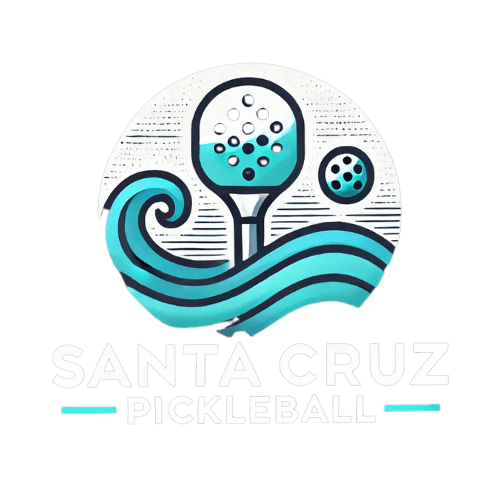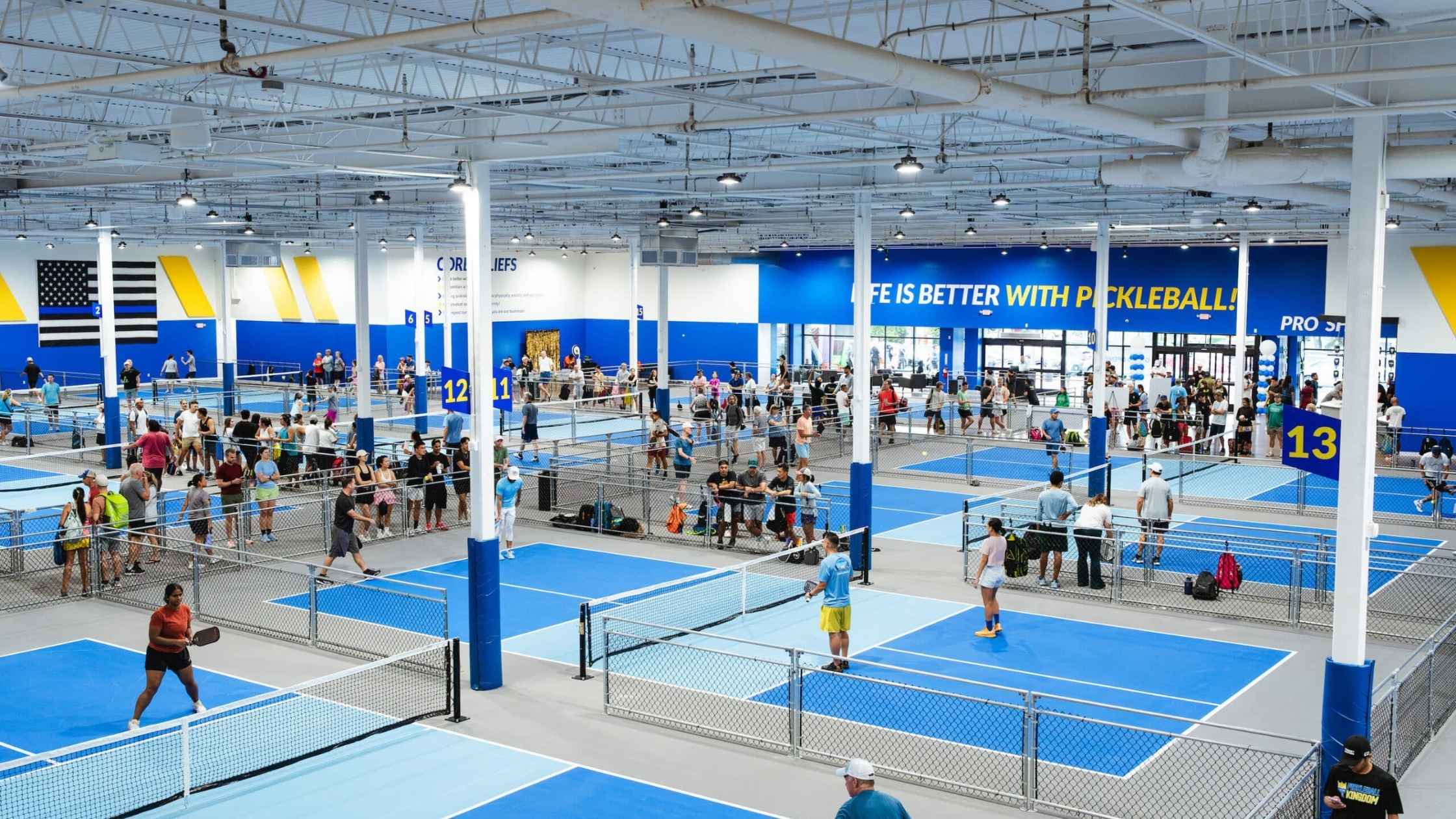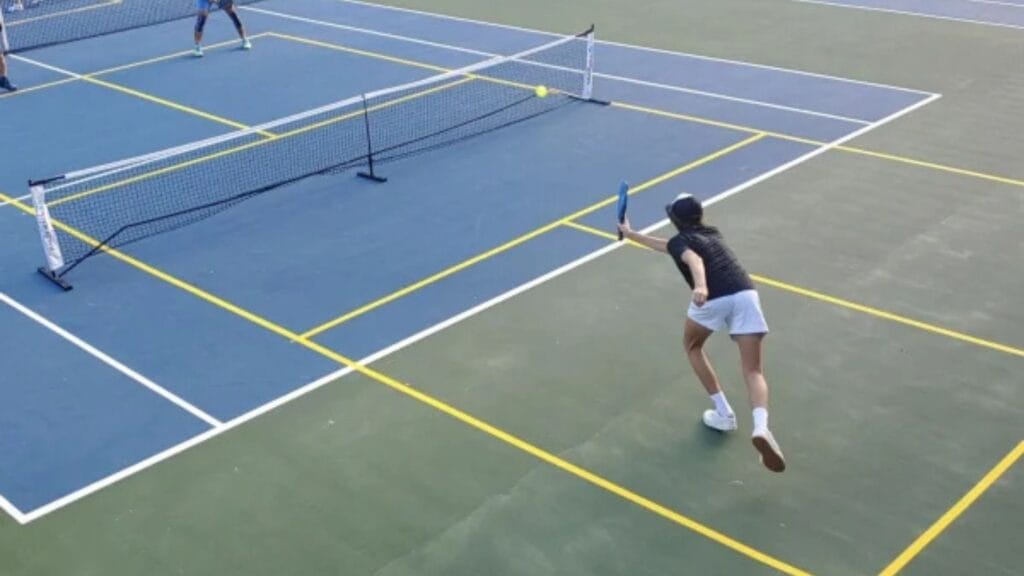Have you heard of the fastest-growing sport to date? Over the past decade, pickleball has experienced an unprecedented surge in popularity across the United States and beyond. This unique paddle sport has transitioned from a niche backyard game into an established, professionally recognized sport.
Once an obscure pastime, pickleball now enjoys prime-time media coverage, celebrity endorsements, and packed tournaments.
As the fastest-growing sport in the country, pickleball has successfully attracted millions of people. From a wide range of age groups, physical abilities, and athletic backgrounds, pickleball has taken many by storm.
Whether you’re a passionate sports enthusiast craving a new challenge or a beginner looking for an accessible activity, the ever-expanding pickleball craze promises an exciting and inclusive experience for all.
The Origins of Pickleball: A Humble Beginning
The story of pickleball's creation is one of simplicity, creativity, and family bonding.
Back in 1965 on Bainbridge Island, Washington, three fathers—Joel Pritchard, Bill Bell, and Barney McCallum—found themselves searching for a way to entertain their bored children during summer vacation.
Armed with creativity and a desire for wholesome family fun, they improvised a new game. Using ping-pong paddles and a perforated plastic ball on an old badminton court, they crafted a sport that blended the best elements of tennis, badminton, and table tennis.
Little did they know that this spontaneous invention would grow into an international phenomenon.
Today, pickleball stands as a testament to the enduring appeal of simple fun, ingenuity, and the spirit of community.
Why Is Pickleball the Fastest Growing Sport?
The meteoric rise of pickleball can be attributed to its unmatched simplicity and broad accessibility. These two factors have made it a magnet for new players.
Unlike many sports that require years of dedicated practice and specialized training to reach an enjoyable skill level, pickleball offers an instant sense of achievement.
Most beginners grasp the basic rules within minutes, experiencing the joy of rallies and scoring early on.
The court’s smaller size compared to tennis not only makes it less physically demanding but also fosters quick, engaging gameplay that suits both casual and competitive players.
This unique combination of factors positions pickleball as an ideal sport for a diverse demographic, from retirees to young athletes seeking an alternative to traditional sports.
Suggested reading: The Future of Pickleball in Santa Cruz: New Court Locations
Accessibility and Affordability: Breaking Barriers
One of the primary drivers behind pickleball's astonishing growth is its affordability and ease of access. Pickleball has broken down traditional barriers to participation.
Unlike golf or tennis, where equipment and membership fees can be prohibitively expensive, pickleball requires minimal investment.
A basic paddle and a few pickleballs can be purchased for under $50, and many public parks, recreation centers, and schools offer free or low-cost court access.
Municipalities across the country are rapidly adding dedicated pickleball courts, responding to the growing demand.
This democratization of access has attracted players from every socioeconomic background, creating diverse and welcoming communities.
Consequently, the game has transcended age, income, and athletic ability. All of these factors have made pickleball a sport for the masses rather than an exclusive few.
Health Benefits That Keep Players Coming Back
Pickleball is more than just fun and games—it provides a comprehensive workout that boosts physical health while nurturing mental well-being.
The sport’s dynamic yet low-impact nature makes it particularly attractive to those looking to stay active without subjecting their joints to excessive stress.
Regular play improves cardiovascular endurance, enhances balance and coordination, and strengthens both upper and lower body muscles.
Additionally, the game’s fast-paced rallies and strategic maneuvers stimulate cognitive function, keeping the mind sharp.
Equally important is the social engagement pickleball fosters. Consistent participation helps alleviate feelings of isolation and depression by building a sense of community and belonging.
These holistic health benefits are key reasons why so many players remain dedicated to the sport for years on end.
Suggested reading: Pickleball Tips for Beginners: How to Improve Fast and Have Fun
Pickleball's Surge in Popularity During the Pandemic
The COVID-19 pandemic ushered in an era where outdoor recreation became not only desirable but essential for physical and mental health.
As traditional gyms and indoor sports facilities closed, pickleball emerged as an ideal alternative. This is because pickleball offers a safe and engaging outlet for exercise and social connection.
The sport’s outdoor nature, combined with its ability to accommodate social distancing protocols, attracted families, friends, and neighbors seeking ways to stay active while minimizing health risks.
Between 2020 and 2022, the number of pickleball players in the United States more than doubled, signaling a powerful shift in recreational habits.
This pandemic-fueled boom introduced pickleball to countless newcomers who have since become lifelong fans, ensuring the sport’s continued momentum long after lockdowns ended.
Celebrities and Pro Athletes Embrace Pickleball
The growing popularity of pickleball has not gone unnoticed by celebrities and professional athletes. many pro athletes and celebrities have embraced the sport with enthusiasm.
Household names such as LeBron James, Tom Brady, and Kevin Durant have invested in professional pickleball teams. This trend has begun elevating the sport's credibility and visibility.
Celebrities like Leonardo DiCaprio regularly tout their love for the game, often sharing playful videos and testimonials on social media.
Their high-profile involvement attracts legions of fans, sparking widespread curiosity and participation.
As these influential figures lend their support and financial backing to pickleball, they help propel it from a niche hobby to a legitimate contender on the global sports stage.
Suggested reading: Best Pickleball Players: 20 Pros At The Top Of The Game In 2025
Pickleball Tournaments and Professional Leagues Take Center Stage
Once confined to casual backyard games and community rec leagues, pickleball now boasts a thriving competitive scene. This includes professional leagues and major tournaments.
Organizations such as Major League Pickleball (MLP) and the Professional Pickleball Association (PPA) host events that draw thousands of spectators and offer significant prize money.
These competitions showcase the athleticism, strategy, and skill required to excel at the highest level. In turn, this attracts a new generation of athletes who train year-round.
The professionalization of pickleball has introduced structured rankings, sponsorship deals, and media coverage. Pickleball has been further solidifying its status as a legitimate and respected sport.
This rapidly evolving competitive landscape continues to push the boundaries of what pickleball can achieve on a global scale.
Youth Programs Cultivate the Next Generation
Youth engagement is critical to pickleball’s long-term success, and an increasing number of programs are dedicated to nurturing young talent.
Schools, community centers, and sports camps across the country now offer pickleball instruction as part of their physical education curriculum.
These programs teach kids fundamental skills while emphasizing teamwork, coordination, and sportsmanship.
As more children discover the excitement of the game, they develop lifelong fitness habits and foster a competitive spirit.
Youth tournaments and junior leagues provide opportunities for young players to test their skills in a structured environment. This ensures a continuous pipeline of talented athletes who will carry the sport into the future.
A Social Sport that Builds Communities
Pickleball transcends mere athletic competition by serving as a vibrant social connector that builds lasting communities.
Unlike many sports that emphasize intense competition, pickleball creates an inclusive, friendly atmosphere that encourages conversation, laughter, and camaraderie between players.
Local clubs and leagues offer organized play, social events, and volunteer opportunities. Each of them fosters meaningful relationships on and off the court.
Whether it's a casual pick-up game at the local park or a charity tournament, the sense of belonging that pickleball engenders keeps participants coming back.
This welcoming environment has become a refuge for people of all backgrounds seeking connection, fitness, and fun in equal measure.
Technology and Innovation in Pickleball Gear
As pickleball evolves into a mainstream sport, advancements in equipment technology continue to enhance the player experience.
Modern paddles crafted from high-performance materials like graphite, carbon fiber, and polymer cores provide superior control, power, and durability.
Manufacturers constantly innovate, incorporating ergonomic grips and vibration-dampening systems that reduce strain and improve comfort during extended play.
Shoes specifically designed for pickleball offer better traction and support on court surfaces, reducing the risk of injury.
These technological improvements not only attract competitive players seeking an edge but also make the game more accessible and enjoyable for casual participants.
The continued emphasis on equipment innovation ensures pickleball remains modern, exciting, and player-focused.
Global Expansion of Pickleball: Beyond the U.S.
While pickleball's roots are firmly planted in the United States, its explosive growth has crossed international borders. Countries like Canada, Spain, India, and
Australia have embraced the sport, establishing national associations, clubs, and tournaments. The International Federation of Pickleball (IFP) now includes over 60 member countries, working to promote and standardize the sport worldwide.
Global competitions foster cultural exchange and community, uniting players from diverse backgrounds through their shared passion for pickleball.
As infrastructure expands and awareness increases, pickleball’s global footprint continues to grow. These factors are positioning it as a truly international sport with unlimited potential for further expansion.
Pickleball's Inclusion in Fitness Centers and Resorts
The hospitality and wellness industries have recognized pickleball’s broad appeal, leading many resorts, hotels, and fitness centers to incorporate the sport into their offerings.
Luxury resorts market pickleball clinics and social events as key attractions for vacationing guests, while fitness centers design pickleball leagues and instructional classes to cater to local communities.
These venues often feature state-of-the-art courts and professional instruction, providing a high-quality experience for players of all levels.
The integration of pickleball into these facilities has helped normalize the sport as a mainstream fitness activity and leisure pursuit, attracting new participants who might otherwise never have discovered its many benefits.
The Science Behind Pickleball’s Popularity
Psychologists and behavioral scientists suggest that pickleball’s rapid adoption stems from its unique combination of cognitive and physical rewards.
The sport’s simple rules and easy learning curve create immediate gratification, fostering a sense of competence and achievement even for beginners.
Fast-paced rallies and the requirement for strategic thinking provide continuous mental focus, keeping players engaged and motivated to improve.
Moreover, the opportunity for social interaction enhances emotional well-being and combats loneliness, particularly among older adults.
These psychological factors combine to create a highly addictive and rewarding experience, explaining why so many players become passionate advocates for the sport.
The Role of Social Media in Pickleball’s Growth
Social media has played a pivotal role in amplifying pickleball’s popularity, bringing the sport to audiences that traditional advertising could never reach.
Platforms like TikTok, Instagram, and YouTube feature entertaining clips, instructional videos, and inspiring stories of pickleball enthusiasts.
Influencers and professional players share their journeys, building communities of followers who eagerly engage with the content and spread awareness.
Viral challenges and collaborations with celebrities generate excitement and curiosity, driving record numbers of new players to local courts.
As social media continues to evolve, it remains a powerful tool in pickleball’s global expansion, transforming casual viewers into dedicated participants.
How to Get Started with Pickleball
Getting started with pickleball is refreshingly simple and affordable, making it an ideal choice for beginners of all ages.
First, locate a nearby court—many public parks, community centers, and schools offer facilities free of charge or for a small fee.
Next, invest in a beginner-friendly paddle and a few balls, available at most sporting goods stores or online retailers.
Consider joining a local club or participating in an introductory clinic to learn the rules, techniques, and etiquette of the game.
With minimal financial investment and time commitment, you’ll quickly find yourself enjoying the excitement and camaraderie that make pickleball so addictive.
Understanding Pickleball Rules and Etiquette
While pickleball is easy to learn, understanding its rules and etiquette is essential for an enjoyable experience on the court.
The game is played either as singles or doubles, with the objective being to score points by serving and rallying until an opponent commits a fault.
Key rules include the two-bounce rule, the non-volley zone (commonly known as “the kitchen”), and the underhand serve.
Equally important is practicing good sportsmanship—respecting line calls, maintaining a positive attitude, and encouraging fair play.
By adhering to these guidelines, players contribute to the friendly, respectful atmosphere that defines the pickleball community.
The Future of Pickleball: What’s Next?
The future of pickleball is bright and full of exciting possibilities as it continues to gain momentum worldwide.
Industry experts predict expanded professional leagues, larger prize pools, and increased media coverage, positioning pickleball alongside traditional sports like tennis and golf.
Efforts to include pickleball in the Olympic Games are already underway, promising greater international recognition and legitimacy.
Technological innovations in equipment and training methods will push the boundaries of player performance, while expanding youth programs ensure a steady influx of talent.
As pickleball evolves, its core values of accessibility, community, and fun will remain the foundation of its enduring appeal.
Suggested reading: How to Host a Successful Pickleball Event: Tips and Tricks
Fastest Growing Sport: Pickleball's Enduring Legacy
Pickleball has rightfully earned its reputation as the fastest growing sport in the world, captivating millions with its unique blend of accessibility, fitness, and social engagement.
It offers an inclusive space where players of all ages and abilities can come together to compete, exercise, and connect.
Whether you’re seeking a fun new hobby, a competitive outlet, or a way to stay active and meet people, pickleball delivers on all fronts.
As this extraordinary sport continues to expand and evolve, its legacy will be defined not just by its rapid growth but by the joy and community it fosters in every corner of the globe.
FAQs
What is pickleball and how is it played?
Pickleball is a paddle sport that combines elements of tennis, badminton, and ping-pong. Players use paddles to hit a perforated plastic ball over a net on a court about one-third the size of a tennis court.
Why is pickleball considered the fastest growing sport?
Its simplicity, affordability, and accessibility make pickleball appealing to a wide audience. The sport provides both fun and fitness, which fuels its rapid growth.
How much does it cost to start playing pickleball?
A beginner can expect to spend around $50 for a basic paddle and balls. Many courts are located in public parks and are free to use.
Are there professional pickleball leagues?
Yes. Organizations like Major League Pickleball (MLP) and the Professional Pickleball Association (PPA) offer structured tournaments and competitive opportunities for elite athletes.
Can children play pickleball?
Absolutely! Youth programs in schools and communities make pickleball accessible to kids, promoting fitness and social skills from an early age.
What health benefits does pickleball offer?
The sport enhances cardiovascular health, improves balance and coordination, and provides a low-impact workout that’s gentle on joints, making it ideal for players of all ages.
Final Thoughts On The Fastest Growing Sport In America
Pickleball has cemented its place as the fastest growing sport, driven by its inclusivity, simplicity, and vibrant community spirit.
It has transformed how people view fitness and recreation, offering a dynamic and enjoyable way to stay active and connected.
As it continues to evolve, pickleball’s future looks brighter than ever, inspiring millions to pick up a paddle and join the movement.




